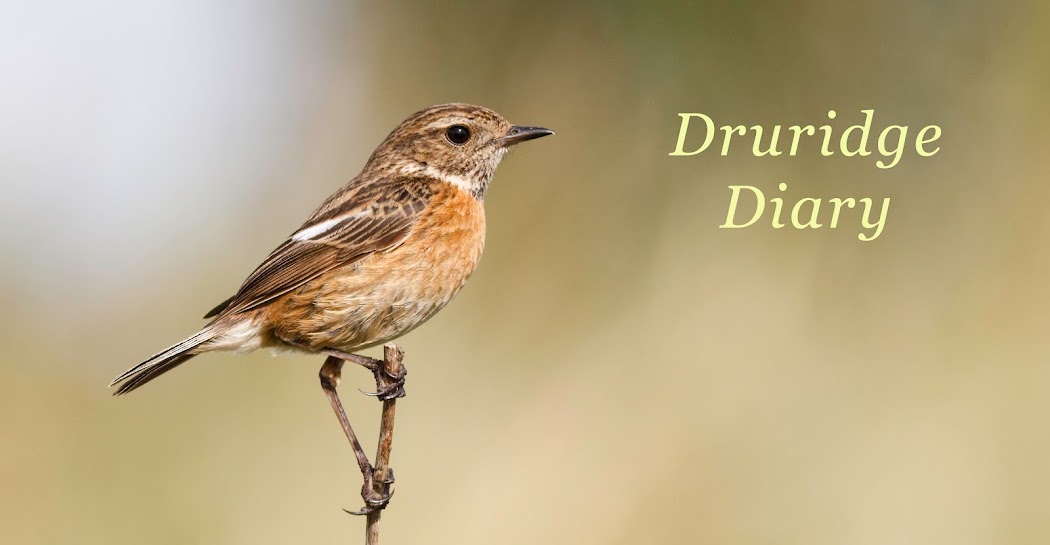Storm Arwen well and truly lashed the Northumberland coast on Friday night into Saturday morning. A northerly wind reaching nearly 160 kph came from beyond Svalbard, straight down the North Sea to hit us square-on.
In theory, seawatching was on the cards for Saturday as winds eased. Instead we awoke to devastation. Trees blocking roads and various bits of neighbours houses in our garden. It was still very windy, very cold and and occasionally snowy or windy. I didn't fancy a session at Snab Point, especially after spending the morning helping our neighbour with his shed roof.
The assumed influx of little auks didn't really happen so when Sunday morning dawned bright and calm we headed for the patch to check out the destruction. The bushes were virtually unscathed, years of coppicing leaving less prone to being blown over. The Oddie hide however wasn't so lucky.
 |
| We have lift-off! Open-top bird hide |
 |
| Room with a view |
 |
| Not good. |
Not related, this mute swan wasn't lucky either. I can't be sure the storm did for it or Avian Influenza which is prevalent at the moment.
 |
| Not so lucky |
It was ringed and Andy Rickeard soon got back to us with the details. It was ringed a cygnet at Testo's Roundabout on the A19 (unusual swan habitat) in July 2016 and has been a regular at QEII Country Park since 2017.
 |
We didn't see much else at Druridge, a winter skylark was noteworthy, so we headed home for lunch.
 |
| wind-sculpted sand dunes |
No sooner were we back when news broke of a potentially twitchable Brünnich's guillemot being tracked up the coast. With no time to get Newbiggin, we headed for Snab.
I hadn't set my scope for long, when I got onto a bird heading north that looked the biz. I alerted Janet to it - it looked very 'black and white' with a black head but it was the shape and jizz that made it stand out (it travelled on its own), it was dumpy, almost barrel shaped, it looked really white with more white on the flanks than a common guille (or maybe there was just more flanks with it appearing so deep chested).The underwings where strikingly white and it showed a white 'armpit' as the wings whirred around. I was surprised that it had arrived as quickly and hadn't been reported from Newbiggin, I checked my phone to see that it had been seen at Newbiggin, five minutes before we saw picked it up off Snab.
We watched it into the bay as it headed towards Coquet Island - it was motoring. It was quite distinctive compared to the guillemots and razorbills that followed. It's dumpy shape (described by one of the Newbiggin seawatchers as looking like a 'rugby ball'). What a bird! I've seen them in Iceland and Arctic Norway on the breeding grounds but it was brilliant to see one on home turf.
We stayed for 45 minutes and added a couple of little auks, two great northern and a handful red-throats to the list. It was odd seeing shelducks on a seawatch, we counted seven. We then had to go to Chibburn to look at an injured barn owl reported by the farmer.
It's been an odd week for weather, last weekend was cold and wintery but by midweek we watching many wasps on hoverflies feeding on ivy. Hoverflies in late November aren't common.
 |
| Eristlalis sp - probably E. pertinax on Ivy |
 |
| moody-skies at Druridge last weekend |

No comments:
Post a Comment